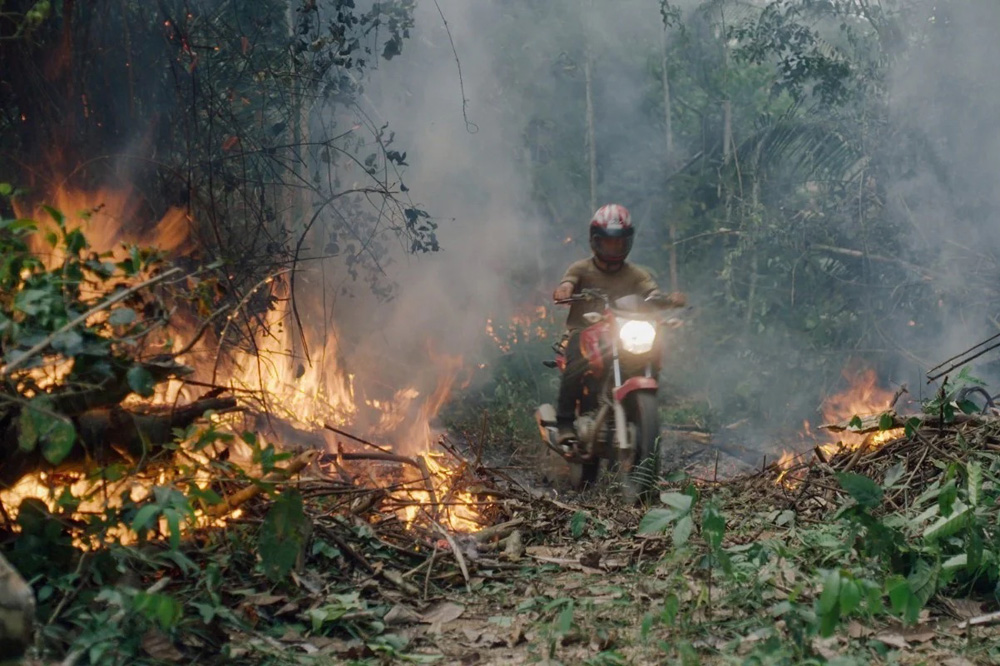When Alex Pritz was beginning to think of how he would shoot “The Terrtitory,” he developed a camera style that would move seamlessly from the macro to the micro. As a cinematographer, he has covered some of the most intense situations imaginable, from filming in halls of COVID-ravaged hospitals in New York at the height of the pandemic in “The First Wave” to tracking an ivory dealer and his cousin on the other side of the law in Kenya in “When Lambs Become Lions,” and when bringing the global implications of the destruction of the Amazon Rainforest, he knew starting small would be the only way to understand what a large-scale issue it is without coming across as intimidating.
“We tried to get through it visually by moving through these big satellite images of the rainforest being chewed away in mass and moving through time quickly, [with] a time lapse of two decades worth of destruction from this massively wide aerial view and then zooming in quite close onto a single ant or caterpillar or whatever it is, just to try and show the scale of what’s being lost here through time and space, but grounded in a really tight story that feels like it has a narrative arc and a dramatic tension within it.”
Pritz has pulled off quite the balancing act with “The Territory,” a gripping thriller unfolding in the heart of Brazil where the indigenous Uru-eu-wau-wau people are putting up an extraordinary defense against rogue miners, loggers and farmers who have sought to dig into into protected land. Their illegal efforts have been made easier by the election of the far-right Jair Bolsonaro, who is no longer enforcing environmental protections of the Amazon as president, imperiling the entire world when deforestation accelerates the effects of climate change around the globe and while Pritz keeps cameras strictly within the area inhabited by the Uru-eu-wau-wau, he found a sprawling story, thanks to the suggestion of Bitate, an emerging leader within the Uru-eu-wau-wau, and Neidinha Bandeira, a co-founder of the nonprofit Kandidé Ethno-Environmental Defense Association, that he look beyond them as active participants in the film and start to talk to farmers such as Sergio and Martins, who set fire to the forest in an effort to drive the Uru-eu-wau-wau out and clear the land for crops.
While Pritz couldn’t be around for filming the entirety of “The Territory” due to COVID concerns, he had never intended to be the sole person to be behind the camera, long interested in the notion of participatory filmmaking since he was a college student at McGill and traveling to places such as the Philippines and Nairobi to engage locals in telling their own stories. Not only did dropping off camera kits at the edge of the rainforest for the Uru-eu-wau-wau to claim ultimately keep the production going, but the variety of perspectives yields an unusually rich overview of competing interests that make environmental crises so difficult to resolve yet put potential solutions within grasp when it can be appreciated where everyone’s coming from. On the eve of the film’s release, following its premiere at Sundance earlier this year where it picked up both a Special Jury Prize and the Audience Award for documentary, Pritz spoke about how he was able to manage such a conscientious production for his first feature as a director, how evolving technology enabled the production to get closer to the action and how his interests in science and filmmaking have organically come together.
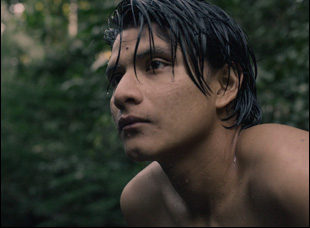
It was a definite shift, but I studied earth science, agriculture, all the things about the planet and I grew up in Ithaca, New York, a small town with a really beautiful natural environment. I had a close group of friends who I would just make films with all the time about anything and everything. We’d just interview each other about each other’s lives and it was just this way of communicating with each other and relating with the world, so I always had it in the back of my head that film could be something, but my parents are public school teachers and I didn’t know any filmmakers growing up, so science felt like a path I could see. Then at the end of school, I thought, “Look, this is my opportunity if I want to give this a shot, so I brought a lot of what I had been thinking about in terms of the planet and climate change into the types of films I want to make.
And coming from a science background, the first ways that I engaged with films were with communities where [having] them document themselves was actually more useful for scientific purposes than having an outside observer come in and document them, so the work that we did in the Philippines with environmental curriculums and working with kids to paint better pictures of their lives and just work through trauma that they had through film definitely influenced the way that I thought about “The Territory.” I worked as a cinematographer on other people’s films, so I’ve learned from a lot of other directors about how films are made and how decisions happen, but my background and that of my producing partner Will Miller, a childhood friend back from Ithaca, New York, in participatory film definitely influenced the way we thought about “The Territory.”
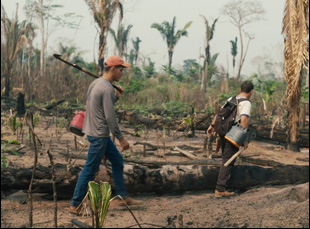
Yeah, part of the thinking with “Lambs” was a lot of films had been made about poaching, but if we want to understand the root causes of this conflict, we have to understand the motivations of the people that are directly engaged in the ivory trade and the hunting of elephants. That’s not just true of the conflict in that film or in “The Territory,” but I think of all conflicts, so the idea came with us that this was a possibility. There was something that Bitate and Ndindha shared in “The Territory,” which was if you want to understand this conflict, you’ve got to understand the people that are creating the conflict, not just those responding to it.
Then thinking about the logistics of filming both sides of a conflict is its own whole other separate thing. It was a security concern, an ethical concern, how much information would be able to be shared between different sides of the story. What we came up with when we embarked on this multi-pronged approach was we had to be honest with everybody we were filming with — there were going to be multiple voices in this story and [we told everyone] you are not the only sole perspective being presented, but within that, we’re not going to add a narrator or some other voice. It’s going to be an accurate representation of your life. But practically speaking, I would be out filming with the farmers, and somebody else would be out filming with the police and somebody else would be out filming with the indigenous community as they were out patrolling their land and I couldn’t know where the environmental police were because if I was asked, then I knew and if I was found concealing information or misrepresenting something, it could get really dangerous for me with the farmers. That meant that we had to speak through this third party security focal point who would decide what information would be shared on a need to know basis, but it was always a tightrope walk made even more difficult I think when [a member of the Uru-eu-wau-wau resource team] was killed and that violence came home to us.
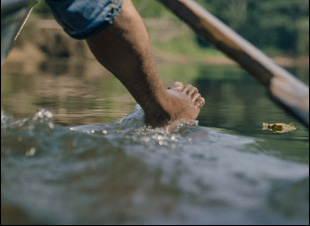
Technology and interest in the media as a tool was something that existed independent of our film team. Bitate was interested in drones and what they were capable of as far as his community before we arrived. He had written applications to get grant funding and training on how to use drones and the World Wildlife Foundation had given them several drone packages, so we were watching that unfold and saying to ourselves, “Wow, this is really interesting. The thing that we’re doing is the thing they find really powerful. Is there a way to merge this and blend it?” And sharing of cameras and sharing of storytelling power was there from the beginning when we embarked on these conversations with the Uru-eu-wau-wau [about] whether they wanted to be part of a film, what a film means, and what it takes to be part of a film. Then when COVID happened, we had the opportunity to take that 10 steps further and Bitate told us basically, “Send us better camera equipment, send us lav mics. We have this little stuff that’s been donated by NGOs, but we want professional equipment if we’re going to keep shooting this for you while you aren’t allowed to enter our territory.”
When that’s the case and you’re getting footage sent back to you, is there anything that takes you by surprise?
It was more how my presence was influencing the type of scenes that would happen. When I removed myself from the equation and we were just getting footage back from the community, what they chose to film of themselves was often quite joyful and fun, [like] a birthday party or stuff we might not have felt as immediately relevant to the film and the structure of the story we were trying to put together. But those were meaningful to them in terms of their own record and cultural preservation. Then at the same time, I think there was a really powerful desire from the community to use media for evidentiary purposes – to document proof, to show to the authorities and other people that they weren’t lying, that these things really were happening and to counter some of those false narratives and misinformation that was swirling.
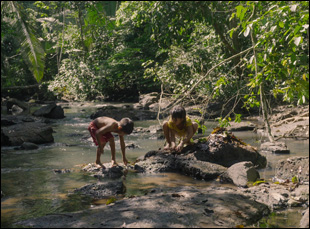
Originally, we weren’t following Bitate as the protagonist within the Uru-eu-wau-wau, [it was] his predecessor Avapu, who is also an amazing leader, but when Bitate said that he thought there was a chance he might become president, our ears pricked up because he had been the person who really acted as a conduit between us and the elders early on, trying to help us explain what a film is and build that mutual understanding to be able to move forward with the project from the beginning. Then as soon as he did become president, it was obvious that’s where the story was going to go.
The big surprise I think for me was Martins, the renegade logger. Originally, the story was tightly focused around the Association of Rio Bonito and there was a previous leader before Sergio and a lot of internal politics within the association. Federal police came in and arrested a leader and another one went into hiding. We kept filming with them while they were in hiding and mentally, at least, I was very caught up in the internal politics of this association. I could see cracks in it, and it wasn’t totally cohesive, so it felt like this story in a sense of individualism versus collectivism. The association of Rio Bonito banded together as a collective for the purpose of advancing a lot of individual people’s lives and private property [where] everyone has their own parcel, but it felt like that individualism was actually what was going to be the downfall of Rio Bonito, if it did end up going south.
Eventually, the Uru-eu-wau-wau and their media effort was the catalyst for its disintegration. And I didn’t film with Martins much and I didn’t consider him a main character during the production, but in the edit, our fantastic editor Carlos Rojas was really able to build Martins into this counterbalance to Sergio, this more reclusive, cerebral entity, [with] this raw energy of “Fuck it, let’s go out and do it.” That opened up a lot for us in the film because also Sergio’s quite sympathetic. Audiences look at Sergio and I think they feel some empathy for him and in a sense, rightly, because he’s a poor, marginalized farmer who doesn’t have a lot of options, but we needed somebody else to carry that ruthless energy of the deforestation and by letting Martins come in and carry that, Sergio was able to be a little more himself in how he presented to the audience.
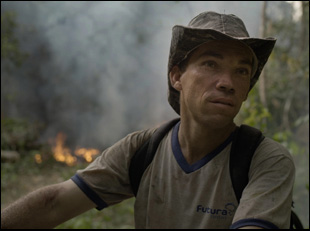
Yeah, I hadn’t really thought of it through than angle, but I think that’s right. We can imagine a world very clearly in which all these issues exist outside of Bolsanaro — post-Bolsanaro, if he loses this upcoming election. We’re releasing the film in Brazilian cinemas September 8th, just a few weeks before the election in Brazil, and we’re releasing in US Cinemas starting August 19th, going nationwide and I think there’s never been a more important time for people to be having these conversations. These issues predate him and aren’t going to go away, so I didn’t want to place too much emphasis on his presidency or his policies because hopefully they’ll get changed. What I did want to show was hopefully how his rhetoric and how his attitude exacerbated and inflamed all these existing ideologies that we see playing out on the ground.
“The Territory” will open on August 19th in Austin at the Drafthouse South Lamar and Drafthouse South Lakeline, Los Angeles at the AMC Burbank 16, New York at Film Forum, Seattle at the SIFF Uptown, Toronto at the TIFF Bell Lightbox and Vancouver at the Vancity Theater. A full list of cities and dates can be found here.




